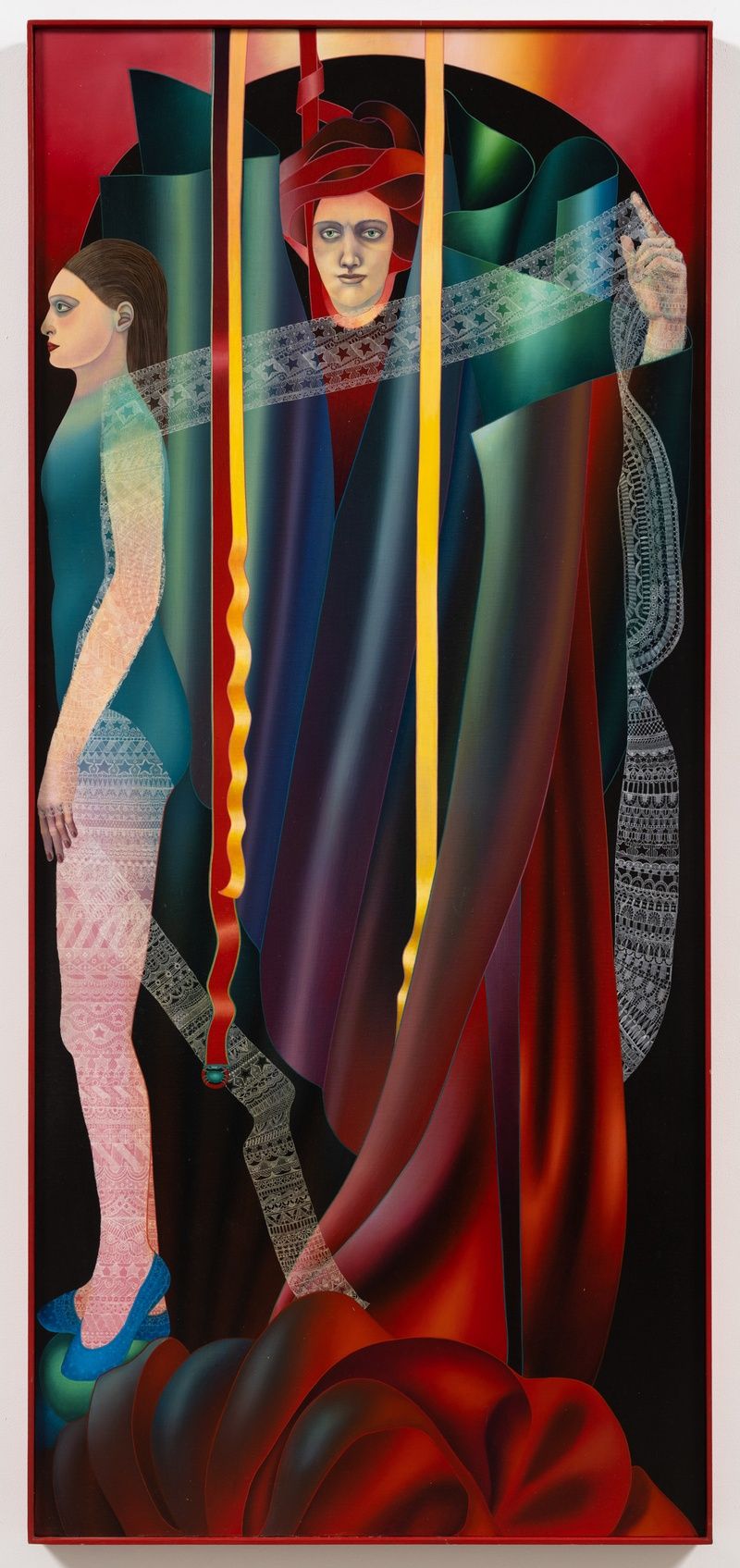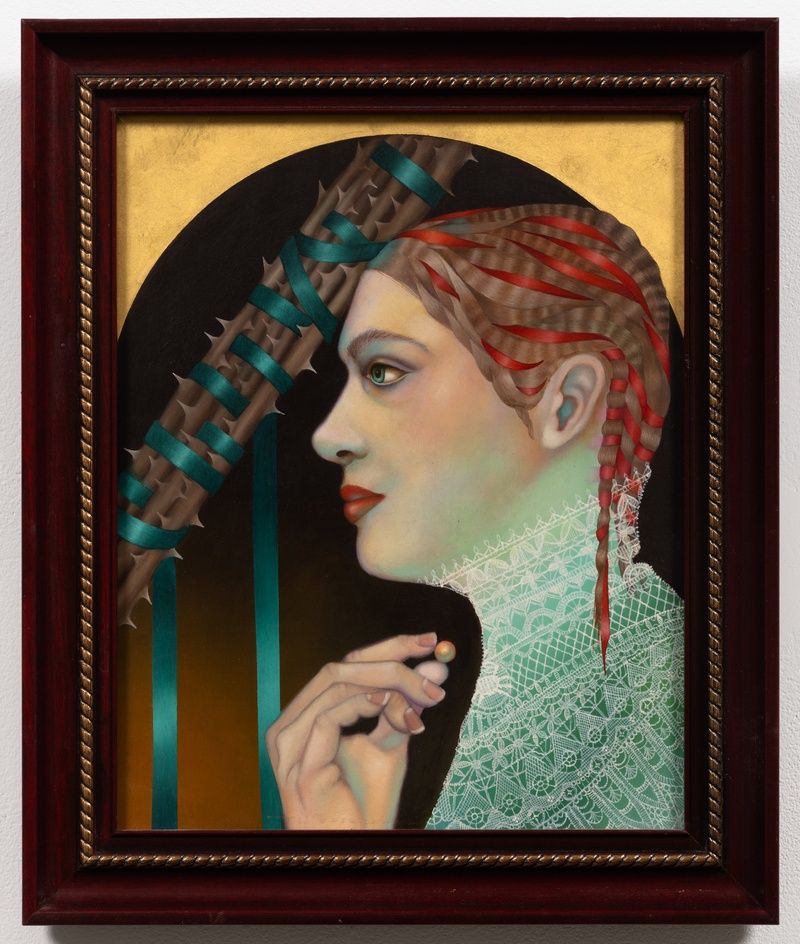Opening reception: Saturday, January 27, 6-8pm
James Fuentes is honored to present the debut exhibition of Elsa Rensaa’s paintings in Los Angeles, and to announce the gallery’s representation of the artist. This project will be expanded upon at the gallery’s Lower East Side location in New York this March.
Spanning the 1970s through 1990s, Rensaa’s exquisite paintings are rendered with meticulous applications of thin acrylic washes, bringing forth lush, syncretic visual portals. These works draw from a vast and visionary range of references including Ancient Nordic, Egyptian, and Eastern imagery, in addition to Renaissance, Art Nouveau, and Dada art movements. As well, the paintings’ Lower East Side iconography is distinctly recognizable as Rensaa’s own. Born in Norway in 1944 and raised in Edmonton, Canada, Rensaa relocated to lower Manhattan in 1979, where she has remained a critical fixture of the downtown community. Although well-recognized for her polymathic contributions, technical abilities, and cultural knowledge, her paintings were seldom shown when she made them. Due to her reclusive nature, the depth and brilliance of Rensaa’s work is only starting to surface and become understood today.
Rensaa’s singular oeuvre of paintings brings together her precise vision and incisive artistic references. Early in her creative career, Rensaa was the art director for the largest printing company in Western Canada, after which she moved to New York, where she found work at Sienna Studios on Elizabeth Street. There, she became one of very few artisans in the city who could make color separations for prints by hand—known as a chromist in the French tradition. She quickly became one of the leading experts in this field, overseeing prints by Picasso and others. Working by day at the print shop, she focused on her intricate paintings during her off hours—ensconced in her home studio on Essex Street.
Carrying through her life as a painter, Rensaa remained deeply engaged in the process of experimenting with restricted palettes and carefully layered color to produce limitless tones and hues. By her hand, thin washes of yellow and red acrylics reveal shades of orange, amber, scarlet, and ochre imbued with the translucent and luminescent effect of oil paint. Although introverted, Rensaa’s deep connection to the world in which she lives radiates in her artwork. In addition to painting, she played an important role in New York’s underground culture, influencing street fashion with the embroidered baseball caps she created with her life partner Clayton Patterson, supporting and advocating for the once-illegal tattoo community, and enmeshing herself with the leading graffiti writers of the day.
Elsa Rensaa (b. 1944, Norway) is an artist living and working in New York City. Rensaa grew up in an intellectual and creative family. Her parents moved from Norway to Canada in the 1920s, and would return to their homeland the following decade, during the Depression. Rensaa’s mother died when she was five years old, and her father relocated the family to Edmonton, Canada after the second World War. An engineer who made significant innovations in the use of prefabricated concrete, he helped build major public projects there. Her siblings, an older sister and brother, were accomplished in the fields of medicine and engineering, and Rensaa, along with her sister, became highly skilled in technical crafts like ceramics, knitting, and sewing. Rensaa went on to attend the Alberta College of Art and Design (today the Alberta University of Arts) in Calgary where she met her future husband, Clayton Patterson, and in 1976 the pair enrolled in Nova Scotia College of Art and Design. In 1979, they emigrated to Manhattan, where they have lived ever since. The gallery first exhibited Rensaa’s work in the group exhibition, Breakthrough in 2023.
James Fuentes would like to thank Clayton Patterson and Gryphon Rue for their collaboration and care for Rensaa’s oeuvre; and Christopher Y. Lew for introducing us to her extraordinary work. Special thanks to Theodore Liouliakis.
Download press release




